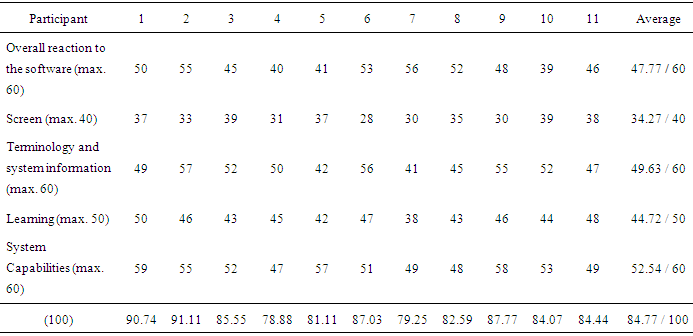-
Paper Information
- Next Paper
- Previous Paper
- Paper Submission
-
Journal Information
- About This Journal
- Editorial Board
- Current Issue
- Archive
- Author Guidelines
- Contact Us
International Journal of Tumor Therapy
p-ISSN: 2163-2189 e-ISSN: 2163-2197
2015; 4(1A): 30-34
doi:10.5923/c.ijtt.201501.05
Usability Evaluation of E-Learning Systems in the Iraqi Higher Education Institutions
Ahmed N. Fahad, Zainuddin Hassan, Rosnafisah Bte Sulaiman, Zahraa Rahman
School of Information Technology, University Tenaga Nasional, Jalan IKRAM-UNITEN, Kajang, Malaysia
Correspondence to: Ahmed N. Fahad, School of Information Technology, University Tenaga Nasional, Jalan IKRAM-UNITEN, Kajang, Malaysia.
| Email: |  |
Copyright © 2015 Scientific & Academic Publishing. All Rights Reserved.
With the current challenges for sustaining e-learning use in Iraqi higher education institutions, this paper introduced some of these challenges along with the examination of current perception of learners to use e-learning. A usability evaluation was carried among 11 experts in order to provide insights for addressing possible enhancement of e-learning services in the Iraqi higher education institutions. A number of suggestions are reported based on the usability result.
Keywords: E-learning, Iraqi higher education, Usability
Cite this paper: Ahmed N. Fahad, Zainuddin Hassan, Rosnafisah Bte Sulaiman, Zahraa Rahman, Usability Evaluation of E-Learning Systems in the Iraqi Higher Education Institutions, International Journal of Tumor Therapy, Vol. 4 No. 1A, 2015, pp. 30-34. doi: 10.5923/c.ijtt.201501.05.
1. Introduction
- The current utilization of e-learning systems in most higher education institutions in Iraq have observed transformations of their education significant, which has resulted in reforms aimed at introducing effective teaching and learning technique along with learning operations. This include raining in the variety of learners enrolling in colleges, undeniable matched by simply reducing variety of qualified instructors, which in essence increases requirement for responsibility and apprehension concerning the role of degree in developing countries like Iraq. Most Iraqi universities has shifted to adopt the online means for learning related purposes eve with the limit access to internet and poor Information and Communication Technologies (ICT) which currently pose a great challenge to understand institutions to make an effort to effectively use the actual service regarding sustainable training providers. In spite of the widespread use of ICT services that numerous higher institutions have realized to end up being very successful in accessing content along with distributing the identical, Iraqi educational facilities still behind in using e-learning services effectively which may be reasoned to many aspects associated with particular supplement of hardware and software equipments in some universities. Education reforms taken on these types of universities haven't integrated along with embraced IT as an important instrument in delivery of training. [1]. The reforms undertaken by some Iraqi universities like Baghdad University for example has mainly emphasis on integrating IT tools in several areas as computer science and electrical engineering departments. On the other hand, the present reforms that were only available in mid 1990s haven't embraced IT use. It has however grow to be apparent which e-learning begin utilized in some universities is not realized with limited IT support particularly in relation to management, administration and usage of information which enhance educating, learning and also research. Integration of IT therefore in Iraqi universities has additionally been unequal [2]. For instance, decision makers in Iraqi universities are far behind providing effective strategy for ensuring sustainable use of e-learning services among students along with financial ability which have shared IT through basically setting up IT team, those without having financial ability for IT integration. Even within those universities which may have integrated IT, it is still restricted to doing available networked computers which can be in many instances inefficient, producing constant equipment failures.A significant challenge that the majority of the universities face may be the slow Internet connection speed. Another serious challenge may be the element connected with organization where by configuration from it hardware equipment with suitable software is simply not proper. Only very few universities have was able to integrate IT strategies. Furthermore, economic factors never have made it easy for universities ready to integrate IT accomplish that. Many educational institutions cannot afford the cost of laying hidden IT commercial infrastructure and keep networks, despite donor capital [3]. Despite all these however, many Iraqi universities have shown interest, willingness and commitment to embrace IT.Regardless of the huge benefits of IT in instructing and mastering processes, using e-learning in Iraqi universities hasn't been to the actual expected stage. This could be attributed to the belief that policy designers viewed degree as some sort of preserve for experts inside the society as opposed to for the society. While there are universities that have gone a step further and integrated IT in teaching and learning processes and experimented with such course management software as Black-Board, others are still struggling to embark on IT integration [4]. The different level of challenges affect levels at which Iraqi universities have integrated IT. As such, different education and learning researchers have got emphasized on the desire to connect universities for the purpose of tracking learners, faculty and budgets in addition to facilitating teaching/learning as well as in enhancing both communication and network academies to enable them to participate throughout global analysis [5, 6]. This led us to investigate the current state of e-learning role in Iraqi universities and how students perceive it as effective learning tool. Therefore, we investigate the usability aspects related to e-learning use among learners form the experts’ point of view. This was aimed to provide insightful view of its current state in some universities.
2. Usability Method
- There are a number of stages involved in the production of research document. One of these is a good methodological approach using appropriate data collection techniques [7]. Practical considerations largely guide the choice of the organization used for this investigation. Data for this study was obtained from primary source involves the use of usability test that was designed to consider the participants’ views on the current e-learning system. A total of eleven participants were involved in this usability test to ensure stable results. Each participant spent approximately 50 minutes to one hour. The experts were chosen based on their familiarity in using e-learning systems and their track records of their students. The e-learning system administrator conducted an onsite usability test at the selected schools. The purpose of the test was to assess the usability of the overall reaction to the software, screen, terminology and system information, learning as well as system capabilities. The usability test questionnaire was adapted from Chin, et al. (1988).
3. Results
- In general, all participants found the current e-learning system to be clear and straightforward (With an average 84.77 points, as shown in Table 1.
|
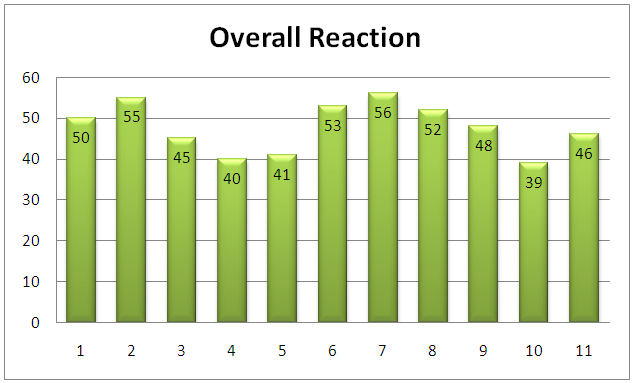 | Figure 1. The Average Reaction Score to the e-learning system |
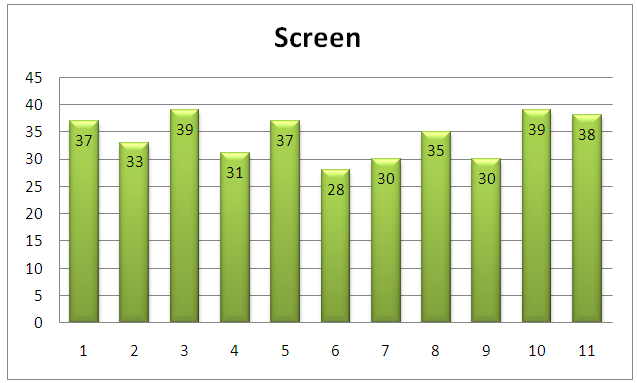 | Figure 2. The Average Reaction Score to the e-learning system Screen |
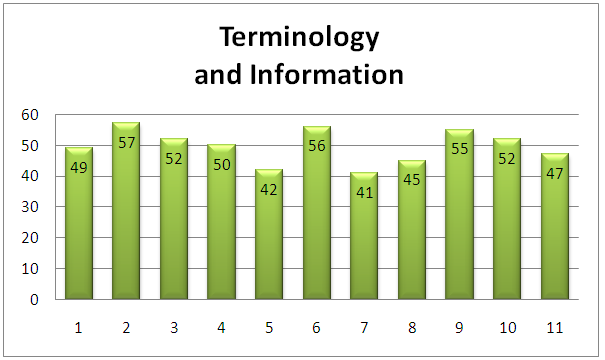 | Figure 3. The Average Reaction Score of e-learning system Terminology and Information |
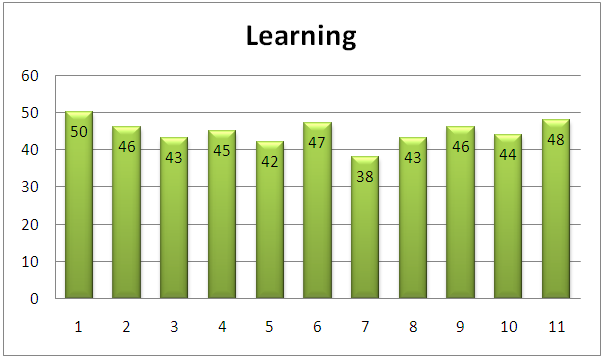 | Figure 4. The Average of Learning |
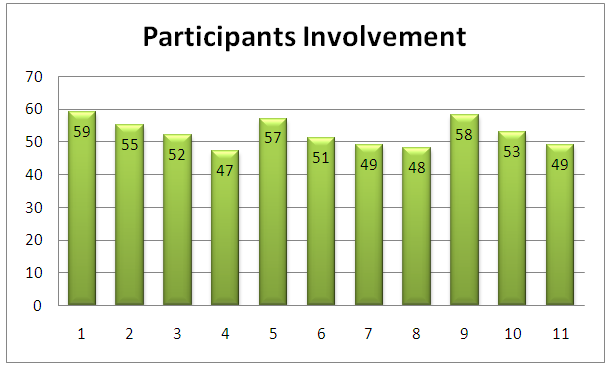 | Figure 5. The Participants Involvement |
4. Suggestions for Future Research
- Based upon the previous research on the pedagogical design for e-learning based theory and the results of the present study, there are still questions regarding the use of other techniques and theories to provide better performance in terms of content retrieving, processing, and presentation in the e-learning environments. However, the research confirmed the relationship between e-learning system functionalities. Further study recommends observing the advance level of e-learning system to be adopted in different programs and schools. In the dynamic environment of ICT development, further research need to carry up the latest implication of technology to store, process, and retrieve contents more efficiently in the e-learning system. Adopting new technology and learning approaches into e-learning environments could help through sorting routines, search engines and other methods of organizing information. In addition, we will need to get used to the idea of spending more time absorbing and analyzing new information. Thus, the advance e-learning systems can be the source of knowledge to improve our learning level and performance.In our view, these adaptations of technology are important for the information age, that their relative presence or absence will have a significant effect on an individual’s learning. In this respect we see the development of e-learning system to involve more efficient functionalities towards processing knowledge will help to increase the level of students to learn and understand context. The current e-learning system functioned to insert the data manually, which reveal the needs for extending the current e-learning system functionalities to store, detect, and retrieve these data automatically. Thus, new research should explore automatic retrieval methods along with the consideration of the current pedagogical design.
 Abstract
Abstract Reference
Reference Full-Text PDF
Full-Text PDF Full-text HTML
Full-text HTML